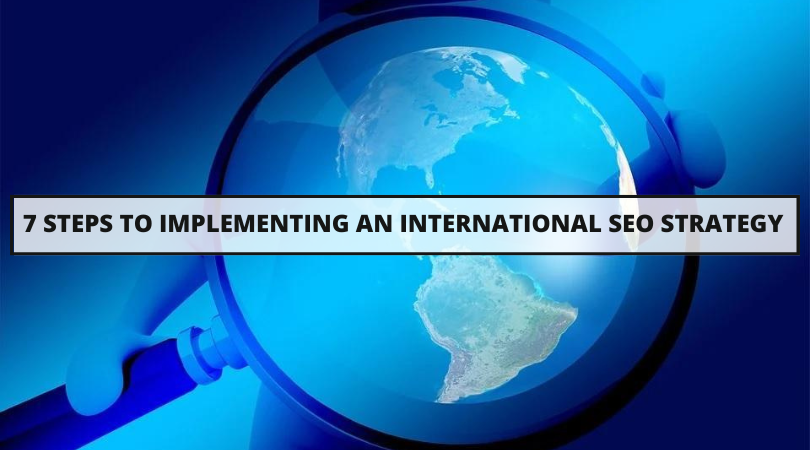In today’s digital age, search engine optimization (SEO) has become indispensable to any online business. But while broader SEO has received ample attention for quite some time, international SEO is often neglected. This can be highly detrimental in today’s interconnected world, as an international SEO strategy is crucial for businesses with diverse audiences.
That said, creating an effective strategy can be complex and requires thorough research and planning. To help you navigate this process, we’ll use this post to guide you through seven essential steps to help you implement a successful international SEO strategy.
A brief definition of international SEO
First things first, here we should define international SEO – and pinpoint its relation to local SEO.
In brief, international SEO is the process of optimizing a website or blog for specific countries or languages. By implementing such a strategy, search engines can more easily identify which countries you want to reach or which languages you should use in your business.
The longer definition would be that international SEO optimizes content to rank higher in search engines across different countries and cultures.
Unlike local SEO, which focuses on driving traffic and conversions from a specific geographic area, international SEO is concerned with reaching a global audience.
That said, international SEO does delve into local SEO practices after pinpointing specific audiences. As such, the two are not conflicting practices but complementary ones. To secure as many conversions as possible, Convert More advises that marketers view these strategies as synergistic.
Needless to say, neglecting international SEO can result in lost opportunities for conversions and revenue. Especially if your business caters to customers outside of your home country.
Therefore, it is crucial to have such a strategy in place to ensure that your website is optimized for a global audience, increasing your online visibility and reaching new customers worldwide.
Characteristics of a successful international SEO Strategy
That said, implementing an international SEO strategy requires careful consideration and planning.
For one, it should be tailored to your target audience, taking into account their language, culture, and search behavior. This means understanding your target audience’s local nuances and preferences and creating content that resonates with them.
Another crucial characteristic of any effective strategy is being multilingual and multicultural. This involves creating localized content in the language and style of the target market and ensuring that the website is accessible and user-friendly for international users.
Finally, a successful strategy should be scalable and flexible. This means being able to adapt to changes in the market and search algorithms while also being able to expand into new markets. Any kind of comprehensive international SEO strategy will have to account for these three characteristics to succeed.
Seven Steps to implementing an International SEO Strategy
With the above in mind, here we can delve into specifics. In order, consider the following steps toward crafting, implementing, and optimizing a comprehensive strategy.
#1 Conduct thorough research
The first step to implementing a successful international SEO strategy is conducting thorough research. This involves analyzing your competitors’ websites and identifying their strengths and weaknesses in terms of SEO.
By understanding what your competitors are doing well, you can find ways to differentiate yourself and gain a competitive advantage.
Additionally, it’s crucial to identify your target audience in each country or region you want to target.
You need to know what keywords they are searching for and what content they are looking for to optimize your website accordingly.
Conducting thorough research will help you identify your target audience’s unique search behaviors, preferences, and cultural nuances.
This will enable you to create content that resonates with them and optimize your website for their search queries.
#2 Choose appropriate keywords
Choosing appropriate keywords is the second step to implementing a successful international SEO strategy. It involves researching and identifying the most relevant and effective keywords for each country or region you want to target.
By doing so, you can improve your website’s visibility in search engine results pages and attract more targeted traffic to your site.
When conducting keyword research, it’s essential to consider language and cultural nuances to ensure your content resonates with your target audience.
As you do, you should also optimize your website for local search engines, such as Baidu in China, Yandex in Russia, and Naver in South Korea.
These search engines have unique algorithms and preferences that differ from Google, so it’s crucial to understand their ranking factors and optimize your website accordingly.
#3 Optimize website structure and content
Optimizing your website’s structure and content is the third step to implementing a successful international SEO strategy.
Initially, this involves implementing hreflang tags to indicate which language and regional versions of your content are available.
Hreflang tags help search engines understand which version of your content is relevant to which audience, which can improve your website’s visibility and ranking in local search results.
Alongside hreflang tags, it’s also essential to use localized URLs that reflect the language and region of your content. For example, using a .jp domain for content targeting Japan or a .es domain for content targeting Spain.
Additionally, creating localized content that resonates with your target audience is crucial. This includes translating your content into the local language and adapting it to the local culture.
By using appropriate keywords and creating localized content, you can improve your website’s visibility in local search results and attract more targeted traffic to your site.
#4 Create localized content
The fourth step to implementing a successful international SEO strategy is creating localized content that resonates with your target audience.
The primary practice this involves is translating your website’s content into the local language and adapting it to the local culture.
Doing so can build a strong presence in local search results and attract more targeted traffic to your site.
On that note, creating engaging social media posts that speak to your target audience in their language and align with their cultural values is also crucial. You may do so by following established social media best practices, like:
- Using local hashtags
- Showcasing local events and activities
- Sharing user-generated content
Additionally, it’s essential to understand the nuances of each social media platform and tailor your content accordingly. For example, Instagram is a visual platform, so incorporating high-quality images and videos can increase engagement.
On the other hand, Twitter is a text-heavy platform, so crafting concise and compelling tweets is crucial.
Creating engaging and relevant social media content can amplify your localized content strategy and build a strong presence in international markets.
#5 Build local backlinks
Building local backlinks is the fifth step to implementing a successful international SEO strategy.
Backlinks are a crucial factor in Google’s ranking algorithm, and local backlinks from reputable sources can help boost your site’s authority and improve your visibility in local search results.
Marketers should utilize local directories and reach out to local bloggers and influencers to build local backlinks. Submitting your site to local directories like Yelp or Yellow Pages can help you get listed in local search results.
Building relationships with local bloggers and influencers can result in valuable backlinks and social media mentions.
It bears noting, however, that it’s important to ensure the audience of the bloggers or influencers you work with aligns with your target market.
It’s equally important to ensure that the content they create is relevant to your industry or niche, or your efforts may fail to resonate with your intended audience.
#6 Monitor and analyze the performance
The sixth step to implementing a successful international SEO strategy is monitoring and analyzing performance.
Tracking your rankings and traffic is important to measure the success of your international SEO efforts and your entire digital marketing strategy and identify improvement areas.
To do so, marketers should use tools like Google Analytics and SEMrush. These tools will help them monitor traffic and keyword rankings and identify opportunities to optimize their sites for better performance.
In addition to tracking rankings and traffic, marketers should also monitor user behavior, such as bounce rates and time on site.
Understanding how users interact with your site can help you identify areas for improvement and make data-driven decisions to optimize your site for better performance.
#7 Continuously improve and update strategy
Lastly, the final step in implementing a successful international SEO strategy is continuously improving and updating the strategy.
The digital landscape is ever-changing, and search engine algorithms are continually evolving.
Therefore, it’s vital for marketers to stay up-to-date with the latest trends and changes and experiment with new tactics and approaches to maintain a competitive edge. This can involve such strategies and practices as:
- Updating keyword research and optimizing content
- Implementing new technologies or tools
- Experimenting with new social media channels
By keeping track of performance metrics and analyzing data, marketers can identify areas for improvement and adjust their strategy accordingly.
Conclusion; implementing an international SEO strategy is vital
In conclusion, implementing a successful international SEO strategy is essential for businesses seeking to expand their global reach and secure more conversions.
By following the seven steps outlined in this post, marketers can tailor their strategies to their target audiences, optimize their content and website structure, create engaging localized content, build local backlinks, monitor performance, and continuously improve their approach.
Neglecting international SEO can result in missed opportunities for growth and revenue. By investing in it, businesses can build a strong online presence, attract new customers, and stay competitive in today’s global marketplace.
So, if you haven’t already, it’s time to start implementing an international SEO strategy for your business.














